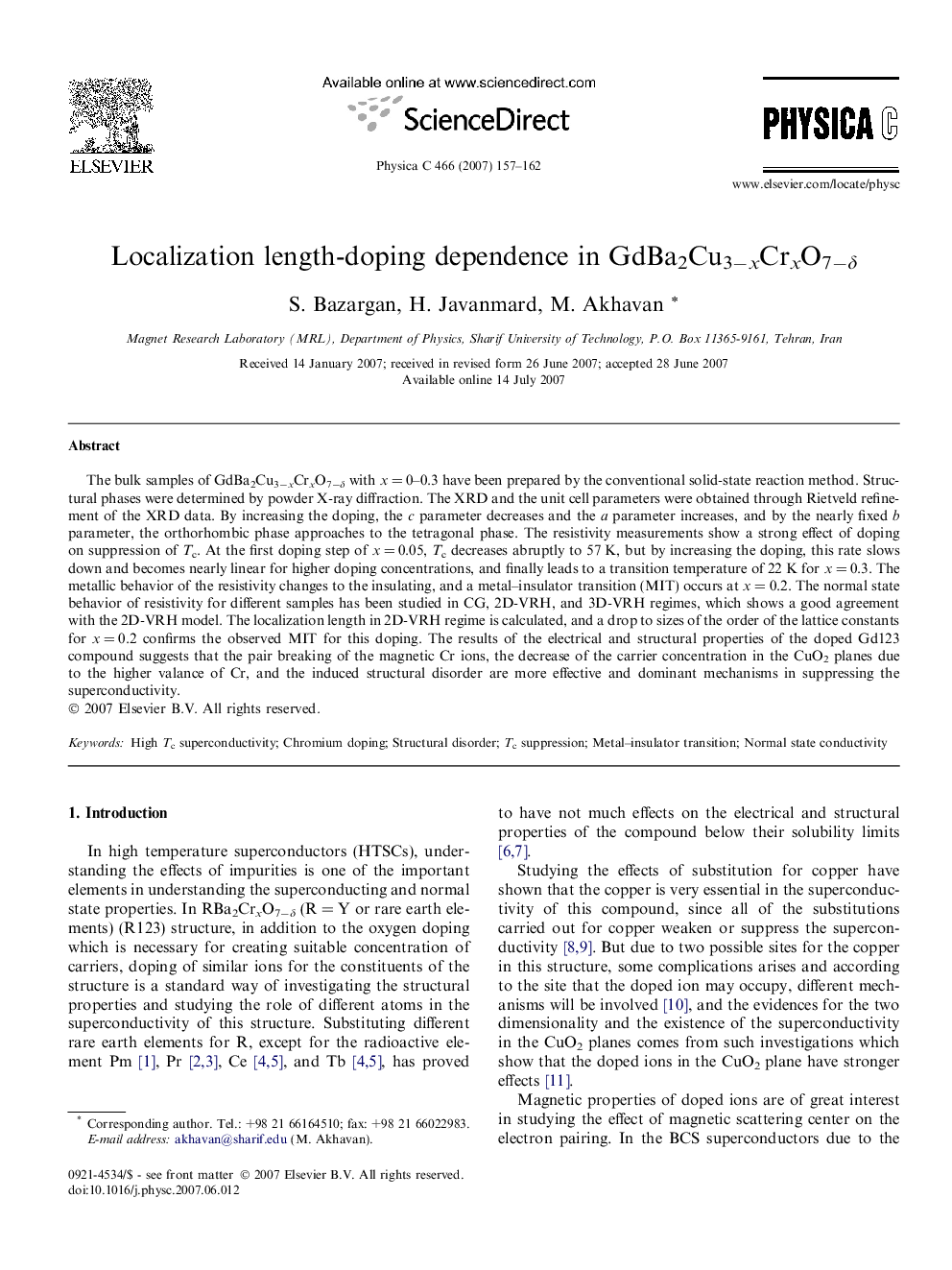| Article ID | Journal | Published Year | Pages | File Type |
|---|---|---|---|---|
| 1819718 | Physica C: Superconductivity and its Applications | 2007 | 6 Pages |
Abstract
The bulk samples of GdBa2Cu3âxCrxO7âδ with x = 0-0.3 have been prepared by the conventional solid-state reaction method. Structural phases were determined by powder X-ray diffraction. The XRD and the unit cell parameters were obtained through Rietveld refinement of the XRD data. By increasing the doping, the c parameter decreases and the a parameter increases, and by the nearly fixed b parameter, the orthorhombic phase approaches to the tetragonal phase. The resistivity measurements show a strong effect of doping on suppression of Tc. At the first doping step of x = 0.05, Tc decreases abruptly to 57 K, but by increasing the doping, this rate slows down and becomes nearly linear for higher doping concentrations, and finally leads to a transition temperature of 22 K for x = 0.3. The metallic behavior of the resistivity changes to the insulating, and a metal-insulator transition (MIT) occurs at x = 0.2. The normal state behavior of resistivity for different samples has been studied in CG, 2D-VRH, and 3D-VRH regimes, which shows a good agreement with the 2D-VRH model. The localization length in 2D-VRH regime is calculated, and a drop to sizes of the order of the lattice constants for x = 0.2 confirms the observed MIT for this doping. The results of the electrical and structural properties of the doped Gd123 compound suggests that the pair breaking of the magnetic Cr ions, the decrease of the carrier concentration in the CuO2 planes due to the higher valance of Cr, and the induced structural disorder are more effective and dominant mechanisms in suppressing the superconductivity.
Keywords
Related Topics
Physical Sciences and Engineering
Physics and Astronomy
Condensed Matter Physics
Authors
S. Bazargan, H. Javanmard, M. Akhavan,
